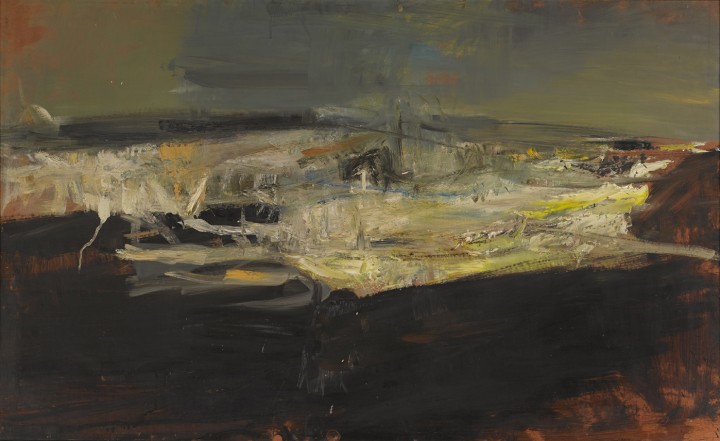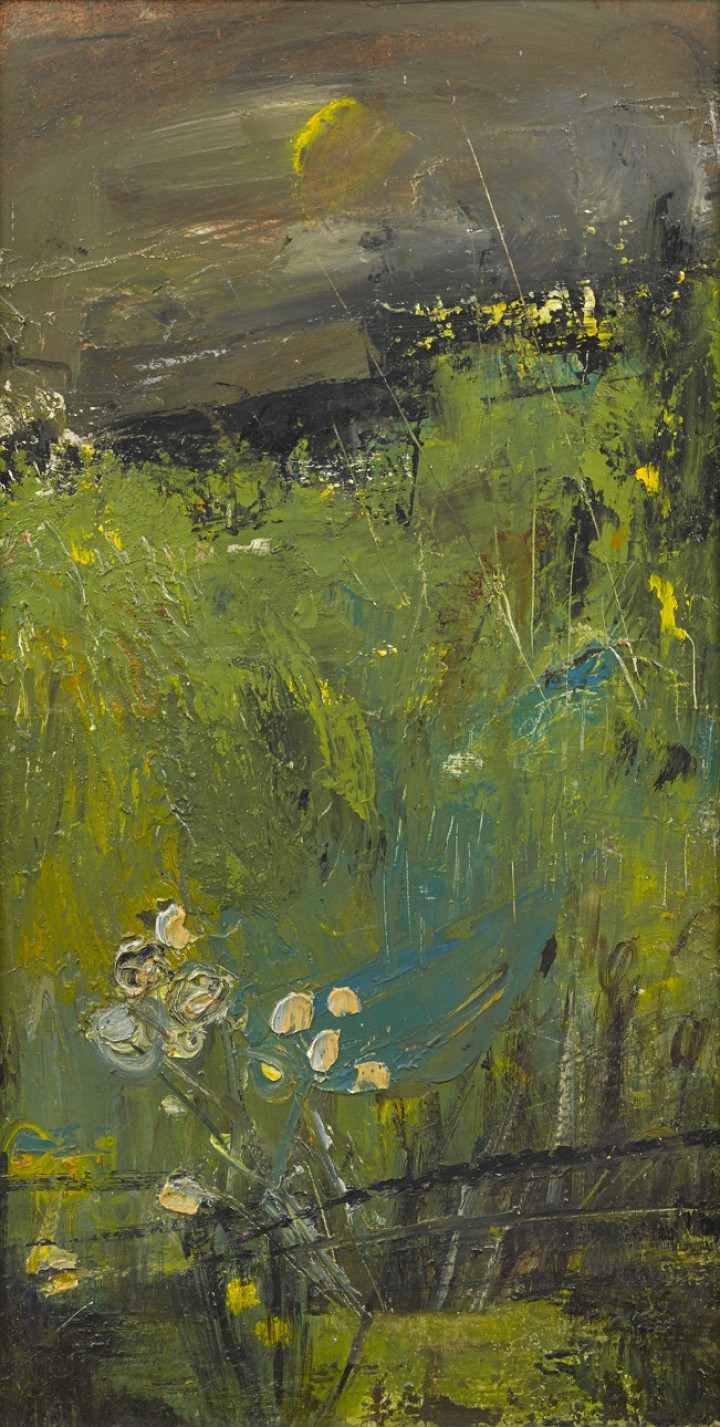Scottish Art News
Latest news
Magazine
News & Press
Publications
Isolation in Scottish Art: Joan Eardley
By Susan Mansfield, 18.05.2020

In 1951, while installing an exhibition of her paintings and drawings at the Gaumont Cinema in Aberdeen, Joan Eardley caught mumps. During a period of convalescence in Stonehaven with a friend, Annette Soper, she took a trip with Soper’s family on which they stopped at the village of Catterline. By this chance encounter, she discovered a place which would stay with her for the rest of her life.
Throughout Eardley’s career, she pursued two bodies of work in two places: painting the children who played in the streets of Glasgow’s Townhead, and painting landscapes and seascapes in Catterline. She pursued both fiercely and prolifically, producing, in a life cut tragically short by cancer at 42, a body of work similar to what some artists produce in a lifetime.
 Joan Eardley, Rag and Bone Shop, Glasgow. Ⓒ Estate of Joan Eardley. All Rights Reserved, DACS 2019.
Joan Eardley, Rag and Bone Shop, Glasgow. Ⓒ Estate of Joan Eardley. All Rights Reserved, DACS 2019.
Both places represented a kind of isolation. While they were busy working communities, they were peripheral to the art world. While Eardley was ambitious for her work, attended exhibitions, read art periodicals avidly and corresponded with gallerists in London (evening receiving one or two at her Townhead studio), she was not concerned with the art world socially. It was a distraction she preferred to keep at arm’s length.
Eardley’s friend, fellow artist Margot Sandeman, said in an interview in 2007: “I had the family [her husband and two sons], but I found that very suitable. It helped me to have the distraction of the family and yet paint. Joan was really single-minded, but she was lonely.” Painting outside her cottage No. 1 Catterline in 1962, Eardley wrote to Sandeman: “I never seem to find I want to move. It’s a lovely spot as no one comes near and I can always work away undisturbed. I just go from one painting to another.” The village, geographically isolated and well under the art world’s radar, gave her the chance to do, undisturbed, the thing which mattered most to her: painting.
 Joan Eardley, Field of Barley by the Sea. Ⓒ Estate of Joan Eardley. All Rights Reserved, DACS 2019.
Joan Eardley, Field of Barley by the Sea. Ⓒ Estate of Joan Eardley. All Rights Reserved, DACS 2019.
The working-class communities of Catterline and Townhead were concerned with the essentials of life. There was no money, and no space, to be otherwise. Eardley, who once said “Painting is breathing”, seemed to flourish in places where the extraneous details of life fell away. Her first home in Catterline had a dirt floor and no electricity; having served some time as a joiner’s apprentice, she fixed it up to be what she needed. In both Glasgow and Catterline, she was accepted, not as a lady artist but as a person who worked hard and got on with the job in hand, just as everyone else did.
Respected, but allowed her privacy, she had some freedom from the expectations placed on young middle-class women in the 1950s. Free to work as she wanted, she challenged herself artistically again and again. In Catterline, she locked horns with the elemental landscapes of the North-east coast. Her late seacapes were wrought in the teeth of the sea, the two-metre-long boards she painted on weighted down by rocks on the beach or anchored to the back of her trusty scooter.
 Joan Earldey, Summer Storm. Ⓒ Estate of Joan Eardley. All Rights Reserved, DACS 2019.
Joan Earldey, Summer Storm. Ⓒ Estate of Joan Eardley. All Rights Reserved, DACS 2019.
In her single-mindedness and determination, she pushed her work forward, edging closer to the abstract painting style she admired in her European and North American contemporaries. By the time of her death, she was one of the most important painters of her generation. Ron Stephen, who was a child in Catterline when Eardley painted there, has said: “When she was here, she just wanted nobody to interrupt her, just to get on with what she was doing. Latterly [when she knew she was ill] she wanted as much time as she could to do her work.” Painting was breathing. There was not, and could never be, anything else.




